Visiting Darwin and the Top End in the Wet Season
Posted on 13 November, 2023 in Wet Season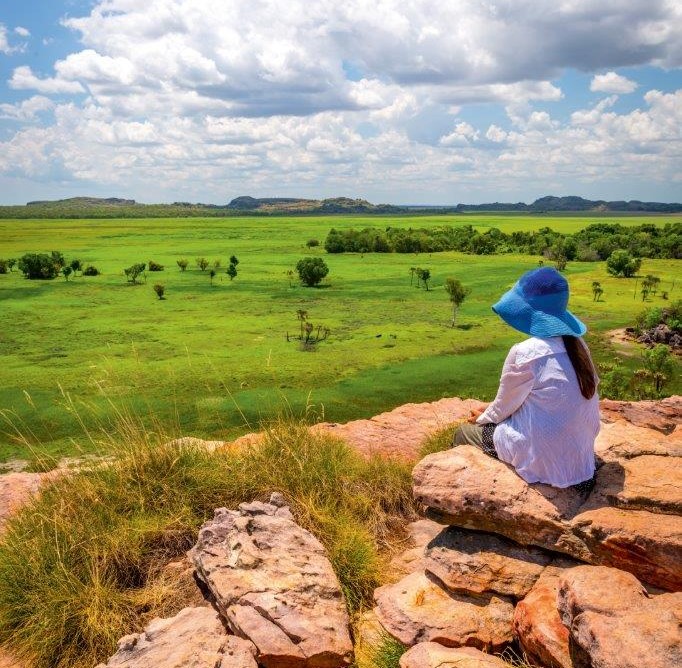
The Wet Season descends on the Northern Territory's Top End between November and April. The Traditional Owners of Kakadu National Park (Bininj/Mungguy) recognise several seasons within these months. These seasons do not follow traditional months but are based on thousands of years of local knowledge, observation and land connection. Subtle shifts mark the change between the seasons in the weather and the seasonal plants and bush foods that grow.
Gunumeleng – Pre-monsoon storm season
Mid-October to late December. 24°C – 37°C
With hot weather and the humidity increasing, this marks the pre-monsoon season. Afternoon thunderstorms nourish the land. Streams run again, fish move to the estuaries to breed, and waterbirds start to spread out. Traditionally, Aboriginal people moved camp from the floodplains to the sandstone country, seeking shelter from the coming monsoon.
Gudjewg – Monsoon season
December to March. 24°C – 34°C
Tropical summer – afternoon thunderstorms, heavy rain and flooding. The hot temperatures and high humidity create an abundance of plant and animal life. Magpie geese nest in the wetlands, and flooding of waterholes and wetlands see goannas and snakes stranded, which then provide a source of food for local Aboriginal people during this time.
Many locals feel the Wet Season is the best time to experience the Top End. There are few crowds; the fishing is at its best, as is mother nature. The laid back Territory Lifestyle is easy to fall into at this time of the year. The land is green and lush, the afternoon storms are welcomed and the nights are balmy. Here are just a few of the reasons we love a Top End Tropical Summer!
Storms – No better show on Earth!
Making an appearance most afternoon's and seemingly out of nowhere, our Wet Season storms can produce over a thousand lightning bolts. Once so predictable, they were often known by locals as "knock off storms" (due to their 4 pm arrival). Locals and visitors will agree there's no better show on Earth.
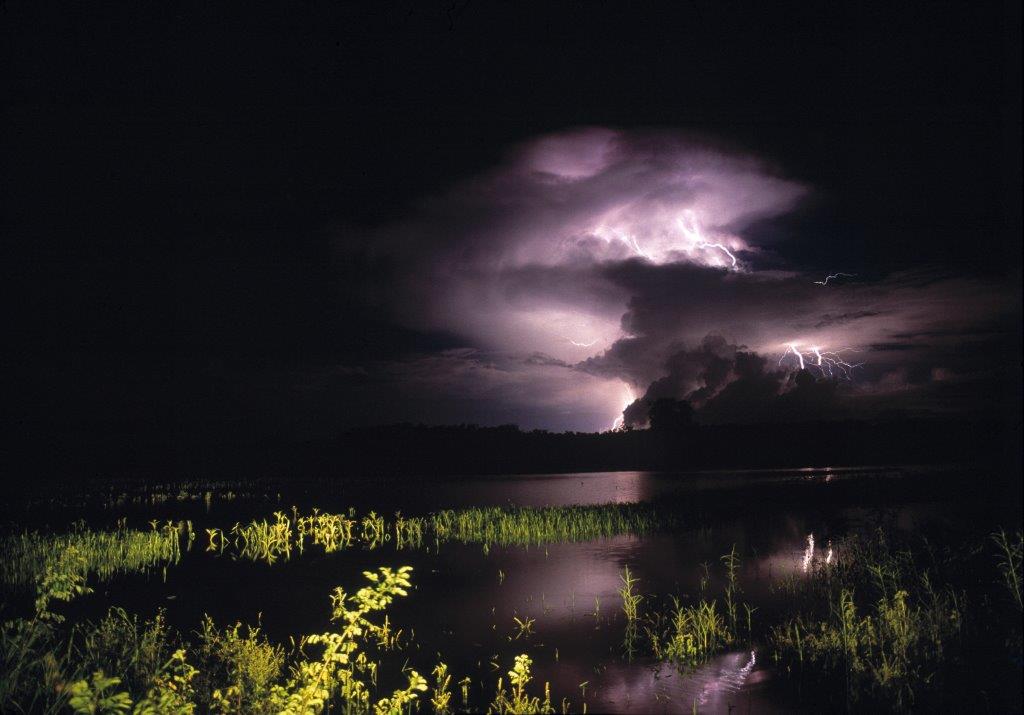
Inspiring ancient creation stories and attracting storm chasers from afar, Darwin has been known as the lightning capital of Australia. Stories told by ancient rock art at Nourlangie Rock, Kakadu National Park, show that this area been a hotspot for this phenomenon for thousands of years.
'Namarrkon (pronounced narm-arr-gon) is an important creation ancestor responsible for the violent lightning storms that occur every tropical summer.
The band running from Namarrkon's left ankle to his hands and head and down to his right ankle represents the lightning he creates. He uses the axes on his head, elbows and feet to split the dark clouds and make lightning and thunder.
Our Wet Season storms are iconic to the Top End between November and April and bring much-welcomed cool relief to a humid day. While our rainfalls are high during these months, it doesn't tend to rain all day, every day and the falls are more likely in the afternoons or evenings. This makes our Wet Season months a fantastic time to visit as you can spend your days out and about before the cooler rain arrives. There are also plenty of wet weather activities to keep you busy in Darwin itself, like the Aviation Museum and the Museum and Art Gallery of the NT (MAGNT).
Sunsets – No filter needed!
No two sunsets are alike season! As the clouds build up on the horizon, the sky phases through its many colours: yellows, pinks, oranges and violets. There are few places where a town will stop to take in the setting sun. The slowing down at this time of the day is a quintessential part of top-end living, and it's often declared by those travellers who have ventured far and wide that our sunsets really can't be beaten.
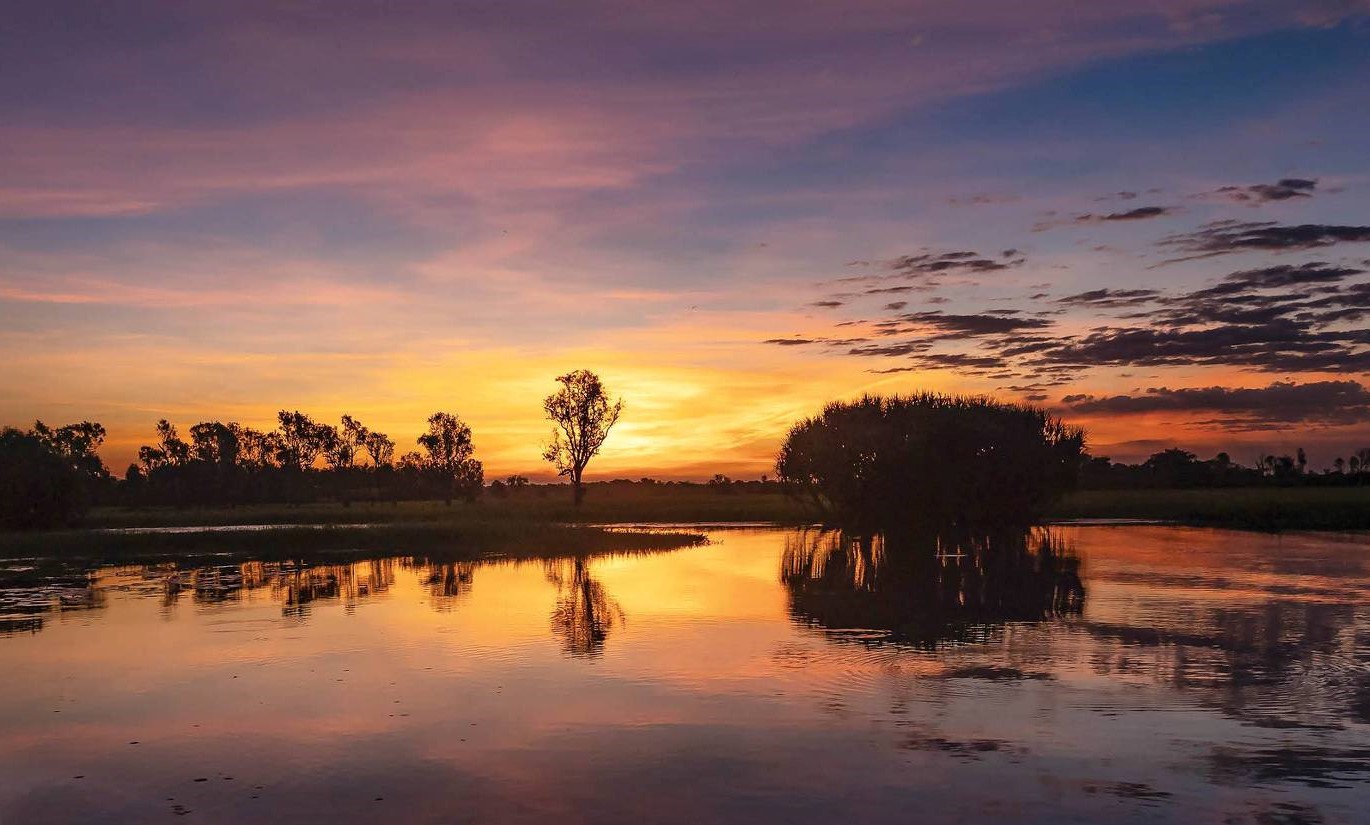
The Wet Season sunsets are particularly spectacular with a definite science to back it up! The afternoon cloud cover is a perfect canvas for the many reds and pinks of the setting sun, along with our afternoon thunderstorms, which clean up the atmosphere, making way for a vibrant sunset.
Some of our favourite places to see the sunset are;
Mindil Beach. Whether it be taking in the flavours and the hustle of the iconic Sunset Mindil Beach Markets (operating between April- October) or relaxing at the Mindil Beach Casino's Sandbar, with ocean views and a cocktail to match the sunset, this beachfront location is a well-known spot for locals and visitors to enjoy this time of the day.
Fannie Bay provides some fantastic laid-back beachfront bars favoured by locals. The Trailer Boat Club, The Sailing Club and Ski Club all offer the perfect shoreside location to enjoy an iconic Darwin sunset along with a great meal & cold drink. Open to members and visitors these iconic clubs are a great family-friendly venue where the kids can run free on the beach while the adults relax with a cold beverage... or even a dip in the Club Pool!
Located on the eastern side of Darwin's Peninsula, East Point Reserve is popular with locals and visitors. This reserve has many picturesque picnic spots and recreational spaces spanning over 200 hectares. Not only offering an uninterrupted vantage point for the sunset, but this area is also rich in military history playing a significant role on the protection of Australia during the WWII bombings.
Join the locals along Nightcliff Foreshore, where you can run, walk or ride the 7km shared pathway from Rapid Creek to Nightcliff, connecting playgrounds, exercise stations and open green spaces. The scenic Nightcliff Jetty is the perfect place to cast a line as the sun sets over the Arafura Sea. Stay around for dinner and take advantage of the excellent street food vendors that offer a taste of Darwin's multicultural influence.
Waterfalls & Wetlands
Although the Wet Season means the closure of some tourist sites in our National Parks, and the heavy rains mark a significant change in the seasonal landscape. Specific locations are at their absolute best at this time of the year, with activities only operating once our flood plains and waterways fill. Kakadu National Park, Nitmiluk National Park and Litchfield National Park are open all year round!
The scenery becomes lush and green; thundering waterfalls bring that "wow factor" only experienced at this time of the year; floodplains and billabongs are full and brimming with wildlife.
Scenic flights over the famous waterfalls, Twin Falls and Jim Jim Falls in Kakadu National Park are particularly spectacular in the Wet Season, showcasing the force of mother nature. An aerial view is a unique way to experience Kakadu National Park as it thrives at this time of the year.
The Yurmikmik Walks in southern Kakadu are at their best in 'the wet', featuring hikes and fantastic swimming opportunities at Boulder Creek and Motorcar Falls.
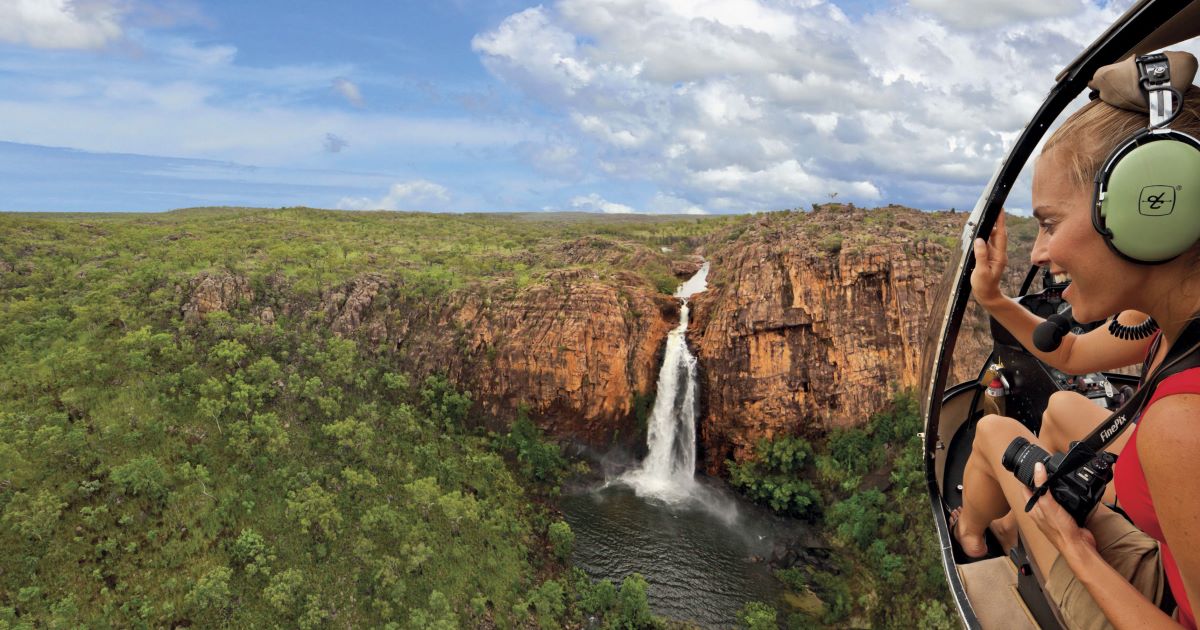
Other popular areas, such as Burrungkuy (Nourlangie), Nawurlandja Lookout and Yellow Water, are open all year round.
Join a Guluyambi Cruise for a journey by boat before visiting the well-known Ubirr rock art site. Here you will pass some of Kakadu's best rock art before a short climb to the lookout which brings you to one of Kakadu's most stunning views – a 360-degree panorama of the Nadab floodplain which is green and lush, and expansive at this time of the year.
When road access to Ubirr is restricted, you can still experience this area on the Ubirr Combo Cruise. This tour becomes available in a narrow weather window during February and March when the Magela Creek becomes flooded, and you can travel via boat through floodplains and connecting billabongs lined with paperbark forest before reaching the creek side of Ubirr Rock. This tour can provide an excellent opportunity to visit this iconic Kakadu site wihtout the crowds, as it can almost guarantee exclusive access.
Litchfield National Park has some excellent sites open during the wet season. You can check out Tolmer Falls and Wangi Falls and even swim at Florence Falls, either in the waters above the falls or in the deep plunge pool at the bottom.
Wildlife
Along with the storms and the changing landscapes this season also brings more plant and animal life. It's a time of abundance!
There are giant waterlilies, spear grass that seems to grow overnight, wildflowers in bloom, bush potatoes, and fruits like wild berries, plums, and red and white apples, which are plentiful in the early wet season.
Kakadu National Park is exceptionally well known for its birdlife and the Tropical Summer signals the start of breeding season for many waterbirds. Brolgas, Jabiru, Egrets and the clever Jacana (Jesus Bird) are commonly seen in the billabongs and waterways. It is the best time to see helmeted friar birds, banded fruit doves and emerald doves.
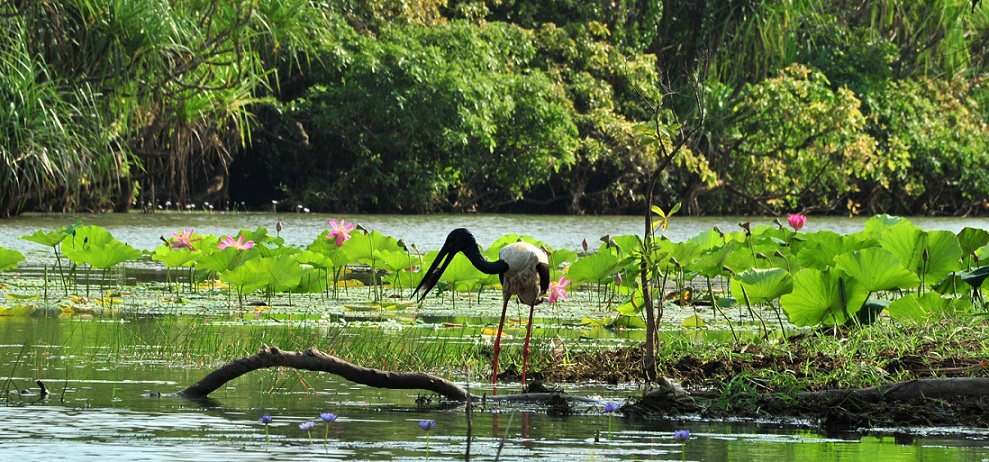
Flooding can cause goannas, snakes and marsupials to seek higher ground in trees and escarpments making wildlife encounters far more common than in the dry season.
Once the storms come through and clean out all of the creeks and river systems the fish come. The waters recede, and we experience "The Run Off (roughly March to early May). Nutrients drain from the flood plains into the ocean and it becomes a prime fishing time, especially for Barra.
Heavy rain can cause sudden road closures, so it is always a good idea to do a daily check on the Kakadu Access Report via the Kakadu website and the Northern Territory Parks website. These will give you daily updated accessibility to attractions, waterholes and trails.
There is something to do and see in the Top End all year round. With its ever-changing landscapes, rich cultural history and tropical lifestyle, we are lucky to experience something unique and diverse at any time of year.
While our shared group tours operate May through September, we offer private charters all year round. Our Wet Season Tours offer a memorable experience that is flexible around your time frame and interests.
If you have any questions about travelling to the Top End at this time of year, or if you want to know more about our year-round private tours, please let us know!
© 2014 Venture North | ABN: 34 142 533 113 | Privacy Policy | Terms & Conditions
Darwin Web Design by Dash Media


